6 Basix Fixes for ‘Sample rate for your microphone isn’t supported’
Several Windows users have been reaching us with questions after seeing the “The sample rate for your microphone isn’t supported” error whenever they open the Xbox App and try to create a party. All affected users are reporting that the microphone or the headset works fine with any other application. As it turns out, the issue is not exclusive to a certain Windows version since it’s confirmed to occur on Windows 7, Windows 8.1 and Windows 10.
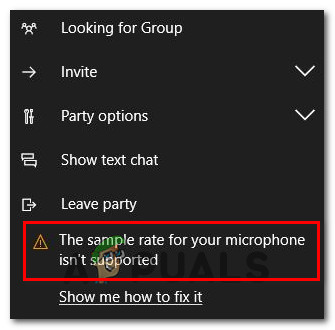
What is causing the “sample rate for your microphone isn’t supported” error?
We investigated this particular issue by looking at various user reports and by analyzing several fixes that are commonly recommended by those that managed to resolve the issue successfully. As it turns out, there are several different scenarios with the potential of triggering this issue. Here’s a shortlist with the most common culprits:
- Common recording device inconsistency – This error can occur due to a common Audio Recording inconsistency that can be caused by two conflicting apps or by a user mistake. In this case, you should deploy the Recording Audio troubleshooter (a built-in utility designed to identify and recommend an appropriate repair strategy).
- Bad windows update – We haven’t managed to pinpoint the exact update that caused the issue, but during two months, there was a surge of user reports complaining about this issue. Since then, Microsoft has released a hot-fix for the issue that is confirmed to fix the problem. With this in mind, you can resolve the problem by installing every pending update, bringing your Windows version to a newer version than 1803.
- Dedicated drivers are not compatible with the Windows version – As it turns out, several headsets haven’t yet been optimized for the latest Windows version. So if you use them with the dedicated drivers, chances are you’ll get this error message due to some incompatibility issues. If this scenario is applicable, you will be able to resolve the issue by uninstalling the current driver and reverting towards the generic one.
- Xbox Live Core service is down – Although this is an unlikely culprit, it’s confirmed that there’s a direct link between this error message and the status of the Xbox Live services. If the core services are down, the party requirements won’t be met and this error will show up. In this case, the only fix is to wait until the services return online.
- NAT Type is set to Close – Another potential culprit is a NAT Type that is set as closed. The Xbox Companion app might trigger this error because it can’t communicate with the Xbox servers. In this case, you can resolve the issue by repairing the NAT using the Fix it tool included in the Xbox Networking tab.
- Glitched Xbox App – Another reason that might trigger this error is a glitched Xbox app. Corruption inside the temp folder can fool the Xbox server that the connection is not proper. If this scenario is applicable, you should be able to resolve the issue by resetting the Xbox app altogether, deleting all temporary files.
Method 1: Running the Recording Audio troubleshooter
Before you try more complex repair strategies, you should start this troubleshooting quest by ensuring that your Windows version is not capable of resolving the issue automatically. As it turns out, an incorrect recording configuration can cause the “sample rate for your microphone isn’t supported”.
Under some circumstances, you might be able to fix it simply by running the Recording Audio troubleshooter and letting it recommend a suitable repair strategy. Some users have managed to fix the issue by deploying this troubleshooter and then restarting your computer.
Here’s a quick guide on running the Recording Audio troubleshooter to resolve the “sample rate for your microphone isn’t supported” error:
- Open a Run dialog box by pressing Windows key + R. Then, type ‘ms-settings:troubleshoot‘ and press Enter to open up Troubleshooting tab of the Settings app.
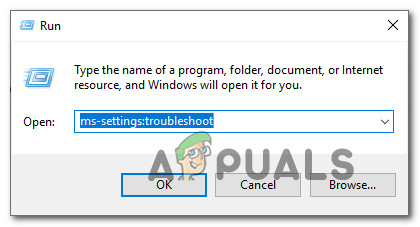
Accessing the Troubleshooting tab - Once you’re inside the Troubleshooting tab, move down to the right-hand menu and click on Recording Audio. Then, click on Run the troubleshooter to start the utility.
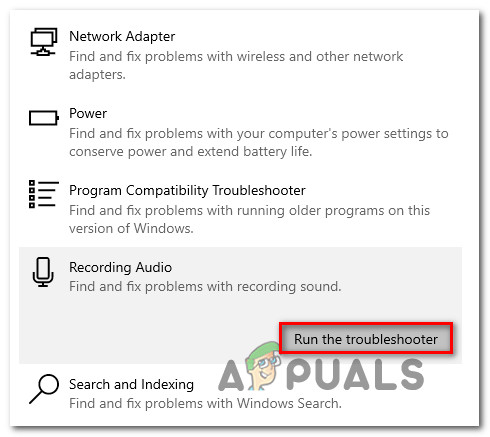
Running the Recording Audio troubleshooter - Wait until the analysis is complete, then click on Apply this fix if a viable repair strategy is recommended.

Apply this fix - After the fix is enforced, restart your computer and see if the issue is resolved at the next system startup.
If the same issue is still occurring or the Recording Audio troubleshooter didn’t manage to find an issue, move down to the next method below.
Method 2: Update Windows 10 build to the latest
If the first method didn’t allow you to resolve the issue, you should proceed by ensuring that every pending update is installed and you’re using the latest Windows 10 build available for your version. Several affected users that we’re struggling to resolve the same issue have managed to fix it by installing the Feature update version 1803.
This confirms the suspicion that Microsoft has quietly released an unannounced hotfix for the issue. Here’s a quick guide on installing every pending update:
- Press Windows key + R to open up a Run dialog box. Next, type “ms-settings:windowsupdate” inside the newly appeared text box and press Enter to open up the Windows Update tab of the Settings app.
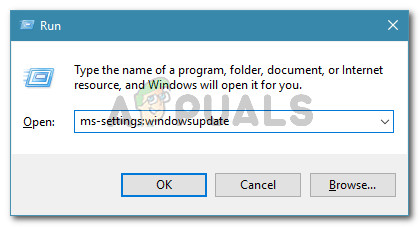
Run dialog: ms-settings:windowsupdate - After you manage to get inside the Windows Update tab, click on Check for Update, then wait for the initial scan to complete.
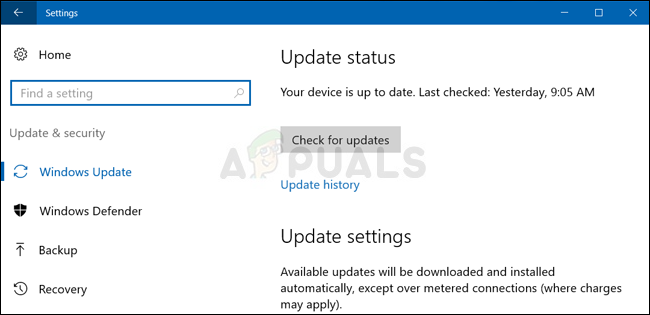
Checking for updates on Windows 10 - Wait until the initial scan is complete. After the updating utility figures out which updates apply to your computer, follow the on-screen prompts to install them one-by-one.
Note: In case you’re prompted to restart before you get the chance to install every pending update do so but make sure to return to the same window and continue with the rest of the update installations until your Windows version is up to date. - Once every pending update is installed, restart your computer and see if the issue is resolved once the next startup is complete.
If you’re still seeing the “sample rate for your microphone isn’t supported” error when you open the Xbox app, move down to the next method below.
Method 3: Installing Generic drivers for your Microphone
As it turns out, another common cause that will produce this “sample rate for your microphone isn’t supported” error is an improper microphone driver. Several affected users have managed to resolve this issue by uninstalling the current driver to let Windows install its generic driver.
So far, there have been no reports of this issue occurring while the generic drivers are installed. We have only been able to confirm the effectiveness of this method on Windows 10, but the steps below can be followed on both Windows 7 and Windows 8.1.
Here’s a quick guide on uninstalling the current microphone drivers to allow Windows to install the generic drivers:
- Press Windows key + R to open up a Run dialog box. Next, type ” mmsys.cpl” and press Enter to open up the Sound window.
- Once you’re inside the Sound window, select the Recording tab and select the Microphone that you’re having issues with. With the recording device selected, click the Properties menu.
- After you’re inside the Microphone Properties menu, select the General tab and click on the Properties button under Controller information.
- Inside the next setup screen, select the Driver tab from the list horizontal menu and click on Uninstall Device. Then, click on Uninstall again to confirm the uninstallation.
- Once the process is complete, restart your computer to allow your operating system to install the generic drivers. You might be prompted to do so automatically
- After the next startup sequence is complete, repeat the action that was previously triggering the “sample rate for your microphone isn’t supported” error and see if the issue is now resolved.
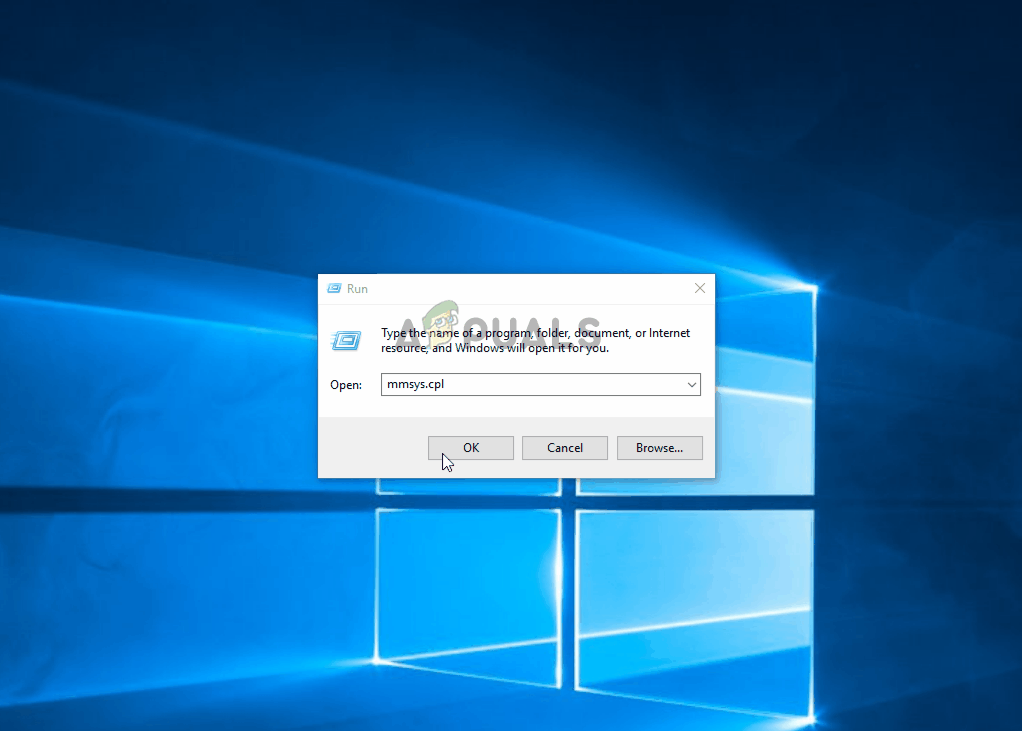
If you’re still encountering the same issue, move down to the next method below.
Method 4: Checking your Xbox Live service status
As several users have reported, this particular issue can also occur in instances where one of more critical Xbox Live Core services are down or undergoing maintenance. Although the two doesn’t seem to be related, some users said that the “sample rate for your microphone isn’t supported” error stopped occurring once the Xbox Core services were back online.
You can check if this is the cause of your problem by visiting this page here. If all services have a green check-mark, it means that there is no problem with the core services and you can proceed with the next method below.
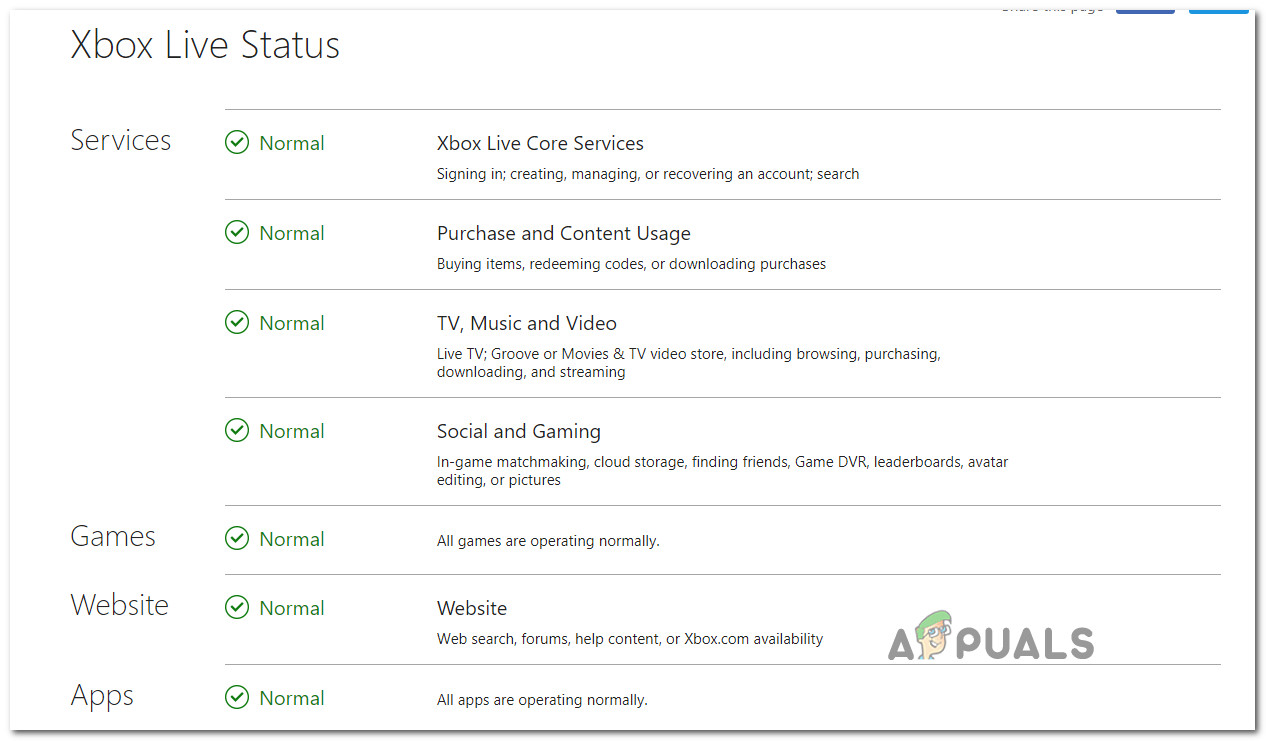
If the investigation reveals a problem with the Xbox Live services, wait a couple of hours before checking back if the issue is resolved automatically.
If there are no issues with the Xbox Live services, move down to the next method below.
Method 5: Fixing the NAT type
As it turns out, the inability to create parties can also be related to the fact that your NAT type is Closed. This can produce errors with various multiplayer games and can also interfere with the Xbox App‘s ability to create and maintain parties.
Several affected users that we’re also struggling to resolve this issue finally managed to do so by opening the NAT using the built-in Fix in utility. After doing so and restarting their machine, some said that the “sample rate for your microphone isn’t supported” error was no longer occurring.
Here’s a quick guide on Fixing the NAT type from the Xbox Networking tab:
- Press Windows key + R to open up a Run dialog box. Next, type “ms-settings:” and press Enter to open up the Settings app.

Accessing the Settings app - Once you’re inside the Settings app, scroll down to the bottom o list and click on Gaming.
- From the Gaming section, select the Xbox Networking from the vertical menu on the left.
- Wait until the NAT analysis is complete. If it reveals that the NAT type is closed, scroll down below and click on Fix it to start the troubleshooter capable of opening it.
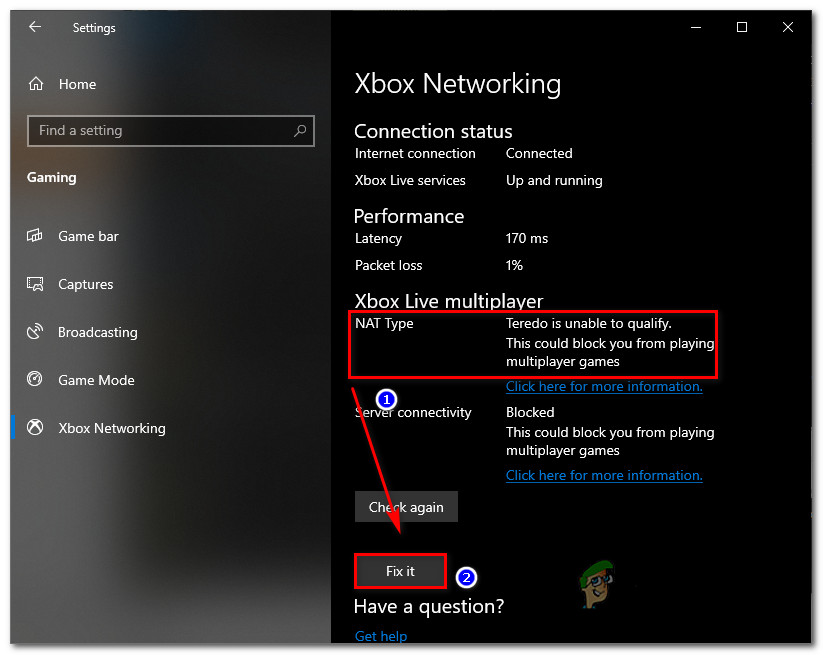
Fixing a Closed NAT Type - Once the process is complete, restart your computer and see if the issue is resolved at the next startup sequence.
Method 6: Resetting the Xbox App
If none of the methods above have allowed you to resolve the issue, chances are you’re dealing with a glitched instance of Xbox Live App or Xbox Companion app. In this case, the fix with the most likelihood of succeeding is to reset the app, forcing it to load all components once again the next time it’s started.
Several affected users have confirmed that the issue was successful for them. If the error is caused by a glitch, there’s a high chance that the sample rate for your microphone isn’t supported” error will be fixed after you do this and restart your computer.
Here’s a quick guide on resetting the Xbox app that is causing the error message:
- Press Windows key + R to open up a Run dialog box. Once you’re inside the Run dialog box, type “ms-settings:appsfeatures” and press Enter to open up the Apps & Features screen of the Settings app.
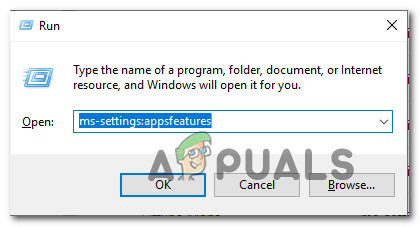
Accessing the Apps & Features Menu - After you’re inside the Apps & features menu, scroll down through the list of installed UWP applications and locate the Xbox app that is triggering the error message.
- Once you see it, click on it once to select it then click on the associated Advanced Options hyperlink.
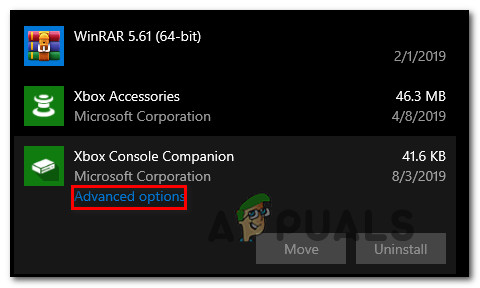
Accessing the Advanced Options menu of the Xbox app - Inside the Advanced Options menu, scroll down to the Reset tab and click on Reset to initiate the process.
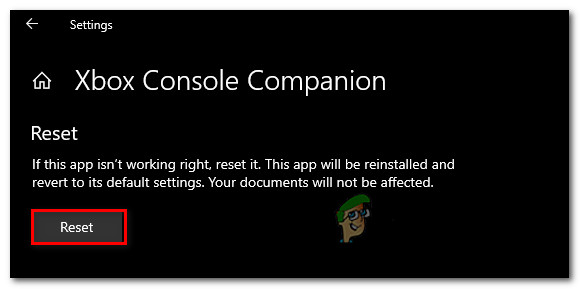
Resetting the Xbox app - Click the Reset button at the confirmation prompt to start the process, then wait for it to complete.
- Restart your computer and see if the issue is now resolved.





